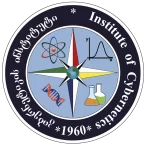Department of Applied Pattern Recognition Systems
Research Areas:
- Since 1970, the department has been a leader in eleven all-union scientific research projects. The research focused on diagnosing the psycho-physiological state of human operators (astronauts, pilots, etc.) through their bioelectric potentials, recognizing three-dimensional objects using their holographic pre-transformation, and predicting mineral deposits using geophysical, geochemical, and space-based information. We developed a general method that was successfully applied to predict diamond deposits. A highly accurate (96%) prediction map for diamond deposits was created for a 120,000 km² area in Yakutia. All these systems were based on trainable artificial neural networks. Currently, one group in the department is working on forecasting Georgia’s key economic indicators for 2011–2015 with a 95% confidence interval.
 2) Within the framework of international grants from ISTC and USTC, the department developed a highly efficient robotic system for selective tea harvesting (see image). The process of hardware implementation of its working model is ongoing. Currently, one group in the department is developing a hybrid intelligent system to solve real-time computational intelligence procedures. This is an inductive reasoning processor that enables near-instantaneous and parallel comparison of multidimensional input vectors with all vectors in the so-called “knowledge base,” calculating comparison results as specific metrics. These metrics can be considered “similarity measures” between the current environmental state description and all descriptions stored in the processor’s memory. The operation of determining the “similarity measure” forms the basis of inductive logic. Through it, meta-procedures for artificial intelligence, such as clustering of description spaces, concept formation, insight, pattern recognition, and more, can be developed. The well-developed elemental base of modern optoelectronics and optoelectronic devices with coordinate addressing enables the hardware implementation of the inductive reasoning processor. Combining and integrating various reasoning systems into a unified hybrid system represents a highly promising research area, offering opportunities for the development of next-generation intelligent systems.
2) Within the framework of international grants from ISTC and USTC, the department developed a highly efficient robotic system for selective tea harvesting (see image). The process of hardware implementation of its working model is ongoing. Currently, one group in the department is developing a hybrid intelligent system to solve real-time computational intelligence procedures. This is an inductive reasoning processor that enables near-instantaneous and parallel comparison of multidimensional input vectors with all vectors in the so-called “knowledge base,” calculating comparison results as specific metrics. These metrics can be considered “similarity measures” between the current environmental state description and all descriptions stored in the processor’s memory. The operation of determining the “similarity measure” forms the basis of inductive logic. Through it, meta-procedures for artificial intelligence, such as clustering of description spaces, concept formation, insight, pattern recognition, and more, can be developed. The well-developed elemental base of modern optoelectronics and optoelectronic devices with coordinate addressing enables the hardware implementation of the inductive reasoning processor. Combining and integrating various reasoning systems into a unified hybrid system represents a highly promising research area, offering opportunities for the development of next-generation intelligent systems.
3) The department has also developed a digital image segmentation method based on mode-seeking techniques using statistical estimation of the density function. The method does not require initial data classification or prior knowledge of the number of classes. The segmentation result is independent of user-selected input parameters. The proposed segmentation method yields excellent results when applied to various types of digital images, ensuring high similarity between the original and segmented images. Below are the results of applying the segmentation method to different types of digitally visualized images:
Original Image

Segmented Image


